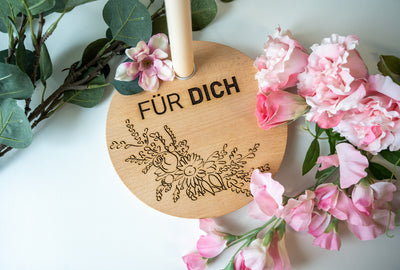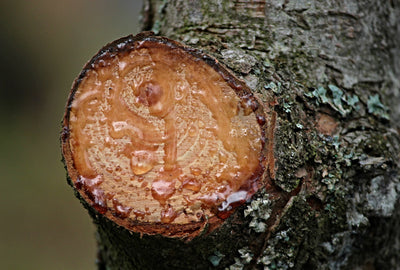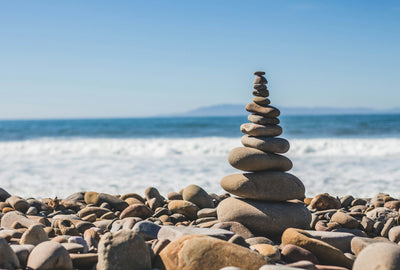As a vegan and environmentally friendly alternative, cork can be used in just as many ways as leather. Here you can read exactly what cork is, how it is made, what properties it has and what you can use the material for. How much does it cost and how can it be sewn? You will also find out about this below.
What is cork fabric? - a short explanation

The fabric is very popular as a vegan alternative to leather among animal lovers and environmentally conscious people. The material consists of the following layers:
- Top layer: 100% natural cork
- Bottom layer: Cotton/polyester blend fabric
This is how the unique, flexible cork fabric is created, which scores with a pleasant feel. Cork is 100% natural in origin. Leather, on the other hand, is an animal product that comes directly from the animal and is usually the tanned hide of the cow.
How is cork fabric made?
The fabric is obtained from the high-quality cork bark of the cork oak. Due to the very flexible and robust quality, it is the ideal vegan alternative to leather. For the production, the cork bark of the cork oak is scraped off with the help of a machete. This layer is renewed within around ten years so that the tree, which mainly grows in Portugal, Spain and France, can be harvested again. The cork comes in layers onto a textile backing to make the fabric. Cotton and/or polyester are added for optimal further processing. If you want to read more about cork, you can read about it in our blog article
What properties does cork have?
Durable, supple, breathable, shape-retaining and flexible, this is how the properties of the material, the natural resource, can be described. It is elastic, and the pleasant feel is soft, warm and smooth. Although the fabric looks rustic, it feels velvety under your fingertips. The durable cork products also impress with their beautiful grain, which is remotely reminiscent of leather products. The natural look is very special. They are also in no way inferior in terms of longevity. Cork is dirt and water-repellent, so no impregnation is necessary.
An advantage over animal leather is that the fabric is not tanned, so it does not contain chemicals such as tanning agents.
What can cork be used for?

Thanks to its flexibility, the fabric adapts to almost any shape, so that the application is diverse. For example, you can use it to make:
- bags
- backpacks
- accessories
- glasses cases
- Jewellery
- purses
- book covers
- covers
The fabric feels soft and warm, which makes it comfortable to wear, and you can sew clothes out of it. It can be coloured so that different designs can be implemented. You can also do light upholstery work with the versatile natural material or design mobile phone cases. In the construction industry, the material is used for insulation or as a floor covering. There are hardly any limits to your imagination when using it. The vegan natural material is always unique.
Why is cork fabric currently in vogue?
The fabric is very trendy. It is used for many sewing projects. The reasons are that it is easy to work with and can be combined well with other fabrics and used in many ways. Cork is also ideal for allergy sufferers. The increased environmental awareness also makes the fabric very popular.
Is cork fabric sustainable?
Cork is a natural, renewable, vegan and therefore very environmentally friendly raw material that binds CO₂. No tree has to be felled for production, and no animal has to suffer. The cork oak offers the advantage that it does not die after the bark has been used and that no dead wood is formed. So it is very sustainable. A tree can provide raw materials every ten years for more than 200 years without having to be felled or suffering any damage from harvesting. Only part of the bark is peeled off. After the raw material has been obtained, the cork oak forms new cork again.
For comparison:
Leather, like meat, has a poor eco-balance: the area used for animal husbandry, water and energy consumption, and CO₂ emissions are significant. Around 500 litres of water are needed to tan one square meter of leather. Cork materials are much more resource-saving.
What does cork fabric cost?
The cost of cork leather is from 18 euros for 50 x 70 cm. The square meter price can also cost 40 euros. Prices vary.
Can you sew with cork fabric?
A wide variety of things can be made from the material. Thanks to the velvety soft and flexible surface, you can sew it with a household sewing machine without any special knowledge. Use:
- Needle size 70 to 90
- polyester yarn
There are also special leather needles. You can work the edges of the cork material open, because it usually does not fray. Sewing with the material is much easier than with the firmer leather. Ultimately, it is just as easy to handle as other fabrics. By the way, you can process cork very well with our Mr Beam laser cutter.
How strong is cork fabric? Can it be washed?
After cutting the cork pieces into three layers, only the middle one is treated further. The middle part is the densest and convinces with high quality. Cork fabric is:
- Robust against abrasion
- resilient
- tear resistant
- Water-resistant
- Durable
You can clean it with water, easily remove stains with an instant dabbing due to its imperviousness to water, and iron out slight creases from the back. Use a thin cloth between the iron and fabric. The material must not be put in the washing machine. If necessary, you can also use a mild soap when washing by hand and then always let the cork dry well, preferably in the air. It must not be washed in the machine.
Conclusion on the cork fabric
Cork fabric is an eco-friendly, vegan alternative to leather and is growing in popularity. Whether it's a bag, backpack, home accessories or clothing, you can use the material for a variety of sewing projects and process it with a household sewing machine. Since cork is a natural product, each material is unique. The grain is always slightly different. The material is also robust, durable, easy to care for and very environmentally friendly in production because it does not weaken the ecosystem. The raw material used is renewable.



